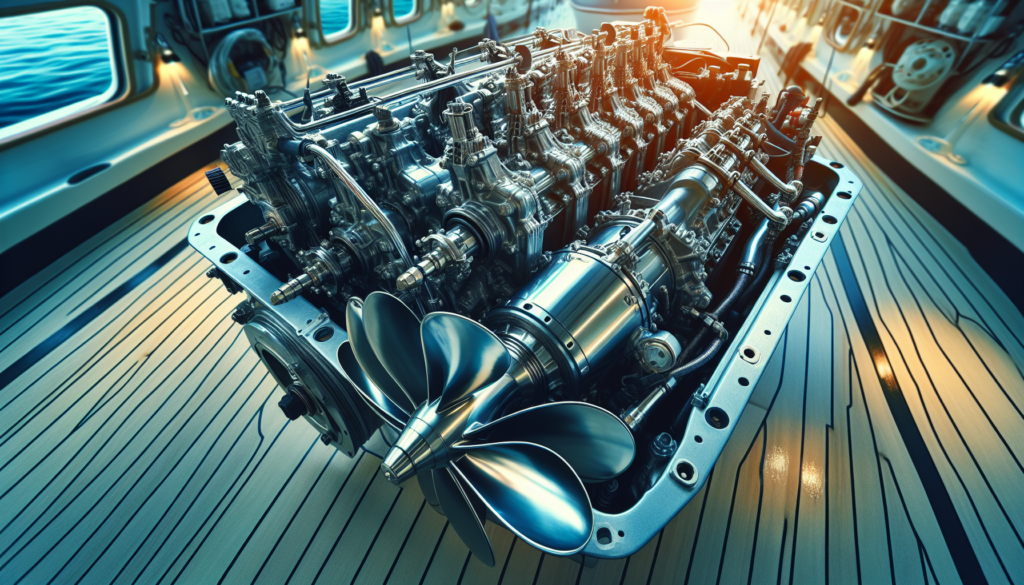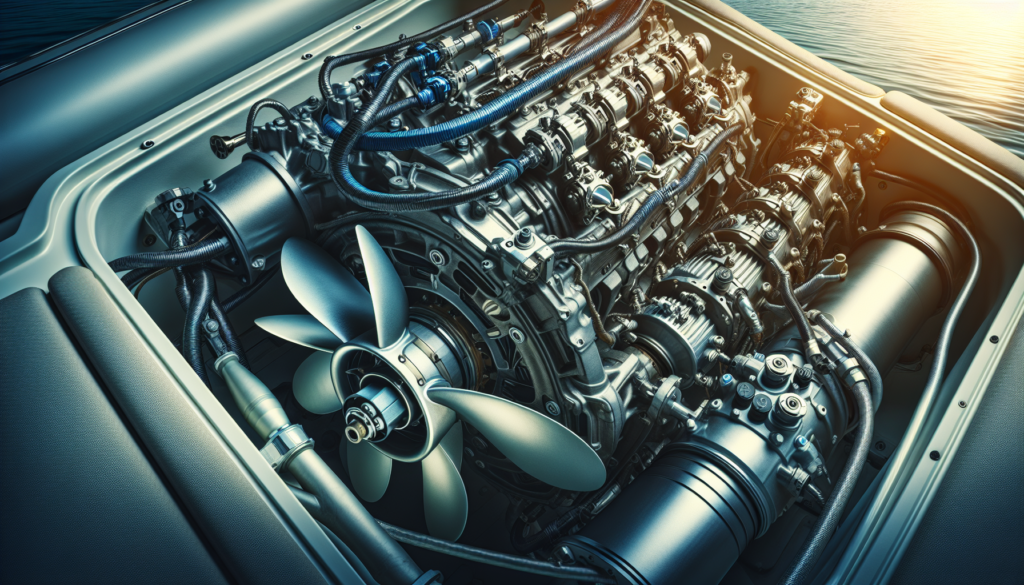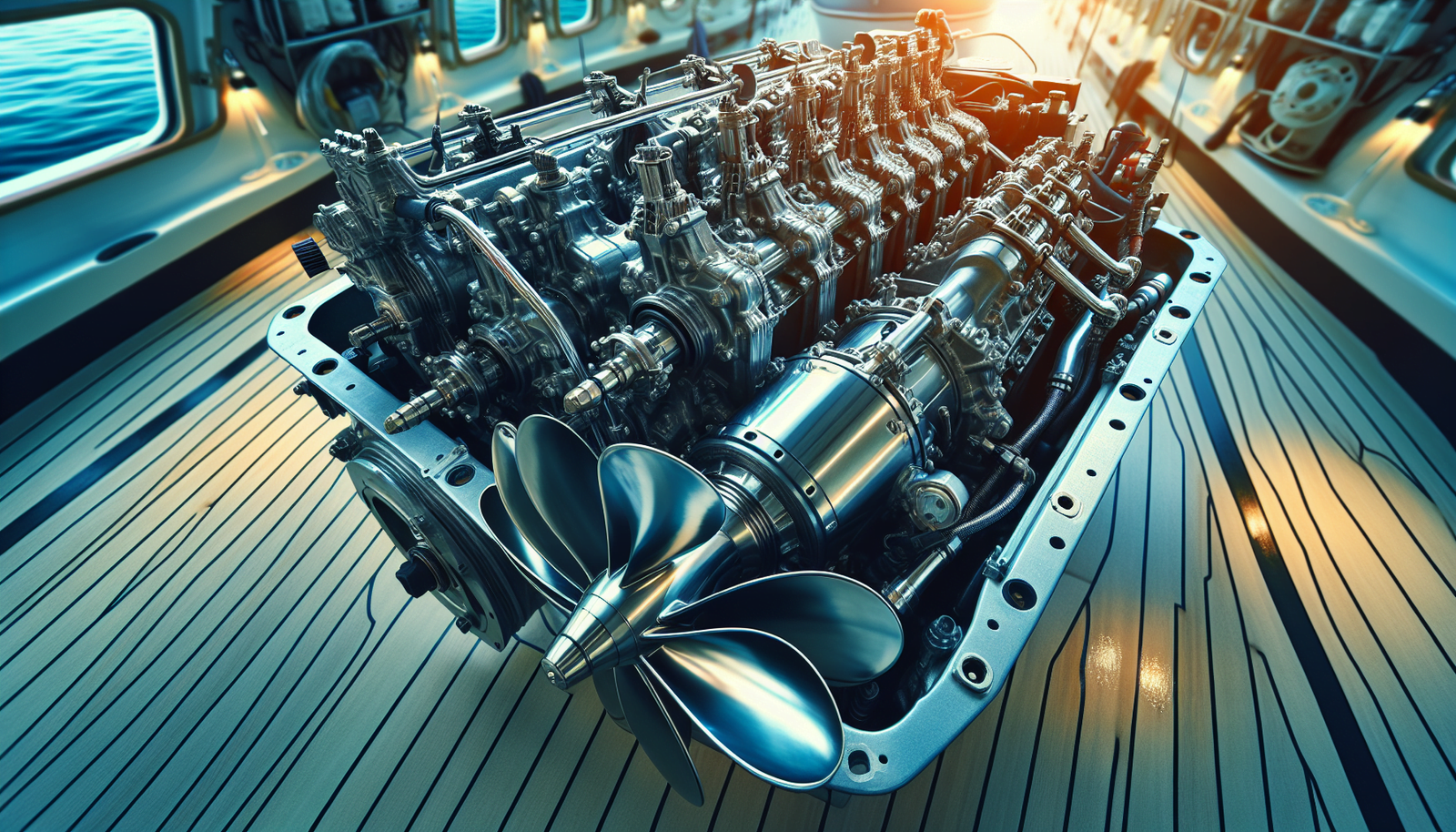Embarking on a boating trip soon? Remember, your boat’s engine is the heart of your vessel, and taking care of it should be a top priority. This article provides you with a comprehensive guide on the crucial engine maintenance tasks to check off your to-do list before each of your exciting journeys. From engine oil changes to fuel system checks, learn about the key maintenance protocols that can improve your boat’s performance and extend its lifespan. Prepare your boat to smoothly sail the waters, and keep unexpected technical snags at bay, because a seaworthy engine means a safe adventure!

Check and Change the Oil
Boat Engine Maintenance kicks off with evaluating the oil’s condition.
Identifying signs of old or dirty oil
As the lifeblood of your boat’s engine, it’s critical to know when the oil needs changing. Dark, dirty oil is a clear sign of contamination. Another telltale sign is the presence of metallic particles, which is an indicator of engine wear.
Steps to change the boat engine oil
changing the oil isn’t as daunting as it sounds. First, you need to start the engine and let it run for about ten minutes – warm oil drains faster. Next, you have to remove the drain plug and let the old oil flow out into an oil pan. Once it’s fully drained, replace the plug and refill the engine with fresh oil, making sure not to overfill.
Frequency of oil changes
The golden rule is to change the oil after every fifty to a hundred hours of operation or at least once a year. However, the frequency may vary depending on the engine’s age, the oil type, and your boating habits.
Inspect the Propeller
The propeller is a vital part of your boat. Without it, your boat is going nowhere!
Indications of propeller damage
Frequent signs of propeller damage include vibration, poor performance, and visible dents or scratches. Damages can potentially harm the engine, so it’s essential to inspect the propeller regularly.
How to remove and inspect the propeller
To inspect the propeller, you first need to remove it using a propeller wrench. Once removed, check for any signs of damage like nicks, dents, and abrasions. Don’t forget to inspect the hub for cracks as well.
Dealing with minor propeller issues
Small issues like minor dents or bent blades can often be resolved at a prop shop. However, severe damages may necessitate a propeller replacement.
Examine the Fuel System
A well-kept fuel system ensures your boat operates smoothly and efficiently.
Identifying potential fuel leaks
If you catch a whiff of gasoline or spot a sheen on the bilge water, you could be dealing with a fuel leak. Fuel leaks aren’t just expensive to fix but are also serious fire hazards.
Checking fuel line condition
Regularly inspect the fuel lines for brittleness, cracks, or soft spots. Also look out for loose or corroded fittings as these could lead to a leak.
Verification of fuel tank health
When it comes to the fuel tank, check for any damage, corrosion, or abnormal wear. Regularly cleaning the tank helps prevent sediment and water build-up, which can affect the engine’s performance.
Test the Battery
A well-maintained battery is key to a reliable boating experience.
Testing battery charge and condition
Use a multi-meter to measure the battery’s voltage. A reading between 12.4 to 12.7 volts indicates a fully charged battery. Also watch out for swollen or leaking batteries – these need urgent replacement.
Spotting signs of battery corrosion
Look for any accumulation of acid crystals around the battery terminal. These appear as a greenish-white powdery deposit and indicate corrosion.
Proper battery storage practices
Always disconnect the battery when the boat is not in use. Store the battery in a cool, dry place, ideally on a tray or wooden block.

Clean and Grease the Engine
Routine cleaning and greasing go a long way in maintaining your boat’s engine.
Routine external engine cleaning
Regularly clean the engine’s external parts with a cloth, brush, or air compressor. This prevents dirt build-up which could lead to faster wear and tear.
Proper greasing of moving parts
Apply marine grease to moving parts such as propeller shafts, rod ends, and control mechanisms. Ensure to use a grease that’s water-resistant and designed for high temperatures.
Preventing engine corrosion
Corrosion can severely damage your boat’s engine. To prevent this, use a corrosion inhibitor or engine fogging oil. It’s particularly important if your boat stays idle for long periods.
Tighten the Belts
engine belts play a key role in your boat’s operation. Therefore, ensuring they’re well-maintained is essential.
Identifying loose engine belts
Loose engine belts result in the slippage, which can lead to overheating, weak alternator performance, and even severe engine damage.
How to tighten boat engine belts
First, locate the tensioner pulley, then release the tension on the belt by loosening the adjuster bolt. Once loose, tighten the bolt back up until there’s only a slight give when you push on the belt.
When to replace boat engine belts
Check regularly for fraying, cracks, or worn out spots. If your belt looks worn out or hasn’t been changed in the past few years, it might be time for a replacement.
Flush Out and Replace Engine Coolant
Coolant maintains the engine’s temperature, making it an important part of boat maintenance.
Signs of low or dirty coolant
Low coolant or an engine running hotter than usual are signs of a coolant issue. Opacity and discoloration of the coolant also indicate it’s time for a change.
Steps to flush and replace coolant
To replace coolant, you’ll first have to drain it by opening the drain plug. Once empty, refill the system with fresh coolant up to the recommended level.
Frequency of coolant changes
Generally, replacing the coolant every two years or after 200 hours of engine operation is recommended, whichever comes first.
Inspect the Bilge Pump
Regular bilge pump inspections help keep your boat afloat.
Testing bilge pump function
You can usually test your pump function by lifting the float switch manually and observing if the pump turns on and ejects water.
Signs of bilge pump failure
Signs of failure usually include the bilge pump running continuously, failure to pump water despite power presence, or an unusually noisy pump operation.
Proper bilge pump maintenance
Regularly clean the pump and check the automatic switch for proper functioning. Additionally, make sure the battery supplying the pump is well maintained and charged.
Change the Spark Plugs
Spark plugs play a crucial role in your engine’s operation.
Signs of bad spark plugs
Common signs of bad spark plugs include trouble starting the boat, poor fuel economy, and sluggish performance.
Steps to change boat engine spark plugs
To change spark plugs, first, remove the old plugs using a spark plug socket wrench. Next, install the new plugs, ensure they are tight, but be careful not to overtighten as that could damage the threads.
Frequency of spark plug changes
It’s advisable to change spark plugs every yearly or every 100 hours of boat operation. Of course, if you notice any issues beforehand, a change may be needed sooner.
Examine the Exhaust System
Finally, inspecting your boat’s exhaust system is vital to ensure proper engine operation.
Identifying potential exhaust leaks
Black soot around the exhaust outlets or in the surrounding water could indicate a leak. A strong smell of exhaust fumes is also a primary sign.
Proper exhaust system inspection
Regularly inspect the exhaust manifolds, elbows, and hoses for any sign of corrosion, blockages, or wear and tear.
Importance of a healthy exhaust system
A properly functioning exhaust system ensures your engine runs efficiently, reduces noise, and expels harmful gases safely, thereby ensuring the well-being of your boat’s engine and those on board.
And there you have it! By following these maintenance tasks, you can ensure your boat engine runs smoothly and reliably, ready for your next trip!

